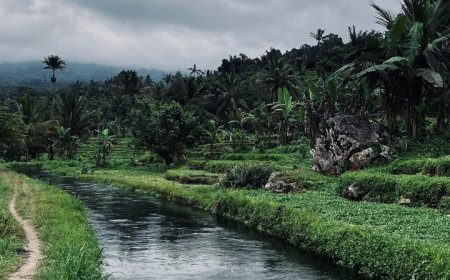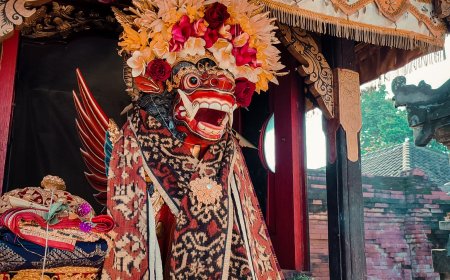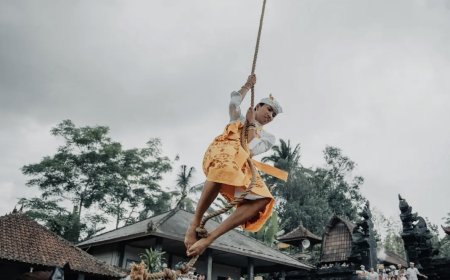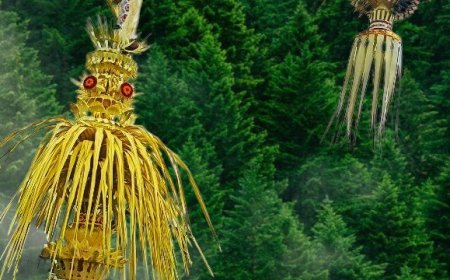Petulangan: a Sacred Instruments of Pitra Yadnya
The diversity of ethnic groups and cultures in Bali never fails to impress people. In addition to being rich in ethnic diversity and culture, there are still many things to explore on the Island of a Thousand Temples. Art is also a component of cultural diversity and the allure of Bali. It not only encompasses the beauty of art itself but also its importance in religious activities in Bali. One of these significant human creations in the Ngaben ceremony is "Petulangan."

Bali is an island that is well-known worldwide for its cultural diversity and traditions. Not only its culture and traditions, but Bali is also famous for its unique arts such as sculpture, literature, dance, gamelan, and others. In Bali, these arts are born and flourish, mutually supporting one another with religious life, resulting in the realization of the Panca Yadnya ceremonies, one of which is Pitra Yadnya. The arts in Bali are often used as instruments in the Ngaben or Pitra Yadnya ceremonies. Pitra Yadnya consists of two syllables, namely Pitra as ancestors and Yadnya as a sacrificial offering based on pure and sincere hearts to the ancestors. Pitra Yadnya has its own meaning, which is a religious ceremony of the Hindu community held to perform the last rites for deceased family members. Many ritual objects or offerings are used in this ceremony, and one of them is Petulangan or a container.
Petulangan is a tool used to cremate the body of a deceased person. The word "Petulangan" is derived from the word "tulang," with the prefix "pe-" and the suffix "-an" added. Therefore, the term Petulangan can be interpreted as a place or container for placing the bones of the deceased person for the cremation process during the Ngaben ceremony. The use of Petulangan as a container has been in practice since the time of the Motor Renggong in the Gelgel Kingdom, which roughly occurred during the 15th to 16th centuries.
The function of petulangan in the Ngaben ceremony is closely related to the ancestral belief in sacred and revered celestial beings and their specific meanings. According to Drs. Ida Bagus Purwita from Griya Yang Batu Denpasar, based on his philosophy, the embodiment of animals in "petulangan" holds the meaning of guiding the souls of the deceased towards heaven. The forms of "petulangan" vary and usually resemble animals or traditional creatures. The term "animal" has another term, "sattwa," derived from the words "sukatasat" and "Tua." These words signify "sukatasat" as essence or core and "tua" as nature. Therefore, the term "sattwa" can be interpreted as an essential nature, which in the Hindu religion refers to the Supreme God. Thus, the embodiment of animals in "petulangan" serves a purpose and meaning, allowing the souls to reach Siwa Loka or Ida Sang Hyang Widhi Wasa as quickly as possible. The diverse animal forms used in "petulangan" are typically determined by a person's character and societal obligations.
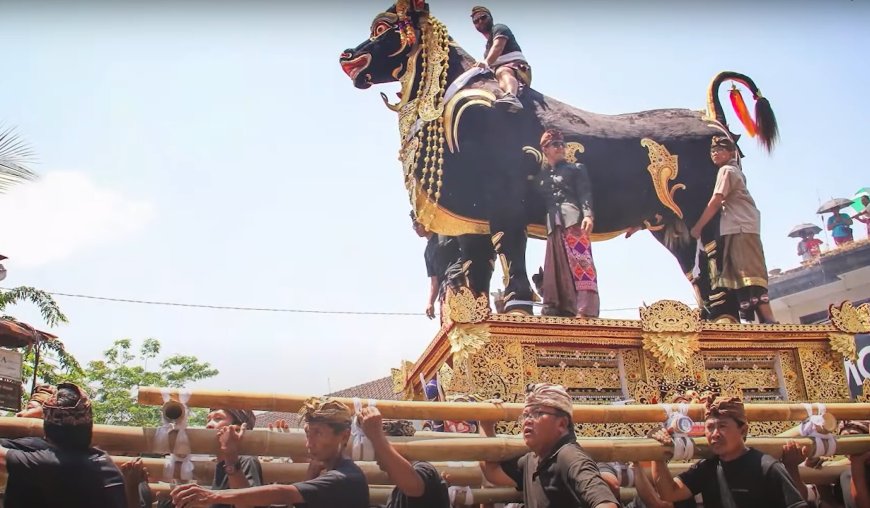 Petulangan (Source : Pujangga Nagari Nusantara Channel)
Petulangan (Source : Pujangga Nagari Nusantara Channel)
In the Yama Purwana Tattwa, it is stated that there are several forms and types of "petulangan" in the Ngaben ceremony. It is mentioned in the scripture that the forms of "petulangan" vary, including (a) Lembu (cow); (b) Macan (tiger); (c) Singa (lion); (d) Naga Kaang (dragon); (e) Gedarba; (f) Sudang-sudangan; and (g) Gajah Mina (elephant statue). The shape of the container or "petulangan" cannot be used by just anyone. The use of each form is adjusted according to the caste or community sect that the ancestors followed in society.
The first form is the "Lembu" (cow) "petulangan," which comes in two colors, white and black. Ideally, the white cow is used by individuals considered sacred, such as priests, temple caretakers, and others. Meanwhile, the black cow is used by the warrior caste (ksatria) and the brahmana welaka.
The second form is the "Macan" (tiger) "petulangan," characterized by a red color with striped skin like a tiger. This "petulangan" is typically used by members of the Pasek Pulosari and Pande communities.
The third form is the "Singa" (lion) "petulangan," often referred to as the Singa Ambara Raja. It is characterized by a dark red color and has wings. Generally, the lion container is used by kings and members of the Tangkas Kori Agung community.
Next, the form of the dragon "petulangan" is somewhat similar to the lion, as it has wings and a fish-scale-like body. The term "naga" here is interpreted as something immovable, signifying permanence and eternity. The dragon "petulangan" is intended for the Arya Sentong and the Vishnu sect.
The ideal form of "petulangan" called "gedarba" is a black bear-like creature with horned feet. Typically, the "gedarba" container is used by noble families (kula wangsa) or commonly by most people.
The "sudang-sudangan" form of "petulangan" resembles a fish with scaly skin. This type of "petulangan" is generally used by fishermen in coastal areas.
Lastly, there is the "gajah mina," a "petulangan" shaped like a large fish with an elephant head. The "gajah mina" symbolizes devotion to Lord Vishnu and is typically used by followers of the Vishnu sect in Hinduism.
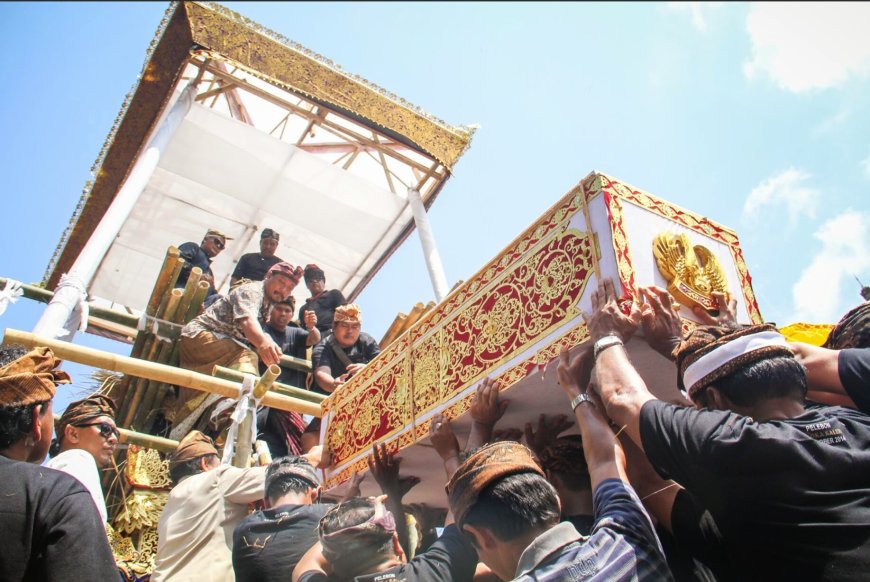 Wadah (Source : Pujangga Nagari Nusantara Channel)
Wadah (Source : Pujangga Nagari Nusantara Channel)
Basically, each type of "petulangan" has different sizes and decorations or materials, but they share the same fundamental materials. Typically, the creation of "petulangan" requires several materials, such as wood used for constructing the frame and head of the "petulangan." Bamboo is then used for weaving the body, followed by fabric, particularly velvet, which is used to cover the body of the "petulangan" and determine its color. Other materials used as ornaments include thread, paper, cardboard, palm fibers (ijuk), and others, which are usually diversified according to the creativity of the "undagi" or the "petulangan" makers. The creation of "petulangan" embodies aesthetic values in art. It involves determining the ratios and anatomical proportions of each "petulangan" form, coloring, and arranging its decorative elements in harmony to create a complete and meaningful work of art.
Based on the philosophy and essential meaning of each element of "petulangan", it becomes something considered obligatory and can enhance the completeness or betterment of the Ngaben ceremony. "Petulangan" serves a purpose both from a religious and aesthetic perspective in a ceremony. Therefore, it's not surprising that the Balinese community frequently incorporates "petulangan" in the execution of the Pitra Yadnya ceremony, considering the significance of using "petulangan" and adding to the beauty of the ritual.




















